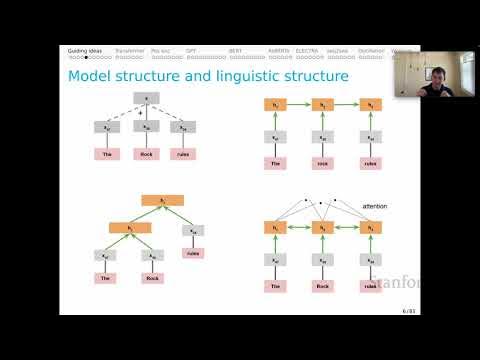Fine-tuning LLMs with PEFT and LoRA
Summary
TLDRThe video discusses the challenges of fine-tuning large language models due to their massive size and computational requirements. It introduces Parameter Efficient Fine Tuning (PeFT) as a solution, which allows adding and tuning a small number of extra weights while freezing the original model parameters. This method prevents catastrophic forgetting and reduces the size of checkpoints significantly. The presenter demonstrates using PeFT with the LoRa (Low Rank Adaptation) technique for efficient fine-tuning of a large Bloom model and explains how to integrate these techniques using the Hugging Face library for better performance with less data and compute resources.
Takeaways
- 🚀 Parameter-efficient fine-tuning (PeFT) helps address the increasing compute and storage challenges with large language models.
- 💻 Large models like T5 XXL require significant computational power and memory, making fine-tuning resource-heavy.
- 📦 PeFT introduces methods like LoRa (low-rank adaptation), which fine-tune only small parts of the model, freezing most of the original weights.
- 🔒 LoRa prevents catastrophic forgetting by preserving the original model weights while adjusting only the added weights.
- 🎯 PeFT is effective when training with small datasets and leads to models that generalize better.
- 🎨 PeFT is also applied in fields beyond NLP, such as AI art, and is becoming more prevalent in models like Stable Diffusion.
- 📏 Fine-tuning with PeFT results in smaller checkpoint sizes, often in megabytes, compared to the large gigabyte-scale full models.
- 🤖 The Hugging Face library integrates PeFT techniques with transformers, allowing seamless fine-tuning of various pre-trained models.
- 🧠 LoRa adapters are added to the model during fine-tuning, adjusting only a small set of trainable parameters while the rest of the model remains unchanged.
- 📊 The script provides an example of fine-tuning Bloom 7 billion parameter model using LoRa for a task of generating tags from quotes, demonstrating the efficiency and flexibility of PeFT.
Q & A
What are the main challenges in training and fine-tuning large language models?
-The main challenges are the need for significant computational power due to the large size of the model weights, and the large file sizes that require a lot of storage. These challenges make it difficult to train and fine-tune large models without extensive resources.
What is parameter-efficient fine-tuning (PeFT) and why is it important?
-Parameter-efficient fine-tuning (PeFT) is a method that allows for fine-tuning only a small number of extra weights in a large model while freezing most of the pre-trained parameters. It is important because it significantly reduces computational requirements and prevents catastrophic forgetting, making fine-tuning more efficient.
What does LoRa stand for in the context of PeFT?
-LoRa stands for Low-Rank Adaptation, which is a technique used in PeFT to add a small number of trainable parameters to the model, allowing for efficient fine-tuning.
What other techniques are mentioned besides LoRa for parameter-efficient fine-tuning?
-Besides LoRa, the other techniques mentioned are Prefix tuning, P-tuning, and prompt tuning. These are also part of the PeFT approach for fine-tuning large language models.
How does PeFT help prevent catastrophic forgetting during fine-tuning?
-PeFT prevents catastrophic forgetting by adding new trainable parameters instead of modifying the original weights. This helps maintain the knowledge learned during the original training while making updates through the new parameters.
How does PeFT handle situations where only a small amount of data is available for fine-tuning?
-PeFT can generalize better with small data sets because only a few additional weights are trained, which allows the model to adapt effectively to new scenarios without overfitting or forgetting previously learned information.
What is the key benefit of the checkpoints generated by PeFT?
-The key benefit is that the checkpoints are very small, typically only a few megabytes, compared to the large original model. This makes storage and deployment of fine-tuned models much easier and efficient.
What role do the frozen weights play in PeFT?
-The frozen weights keep the original capabilities and knowledge of the pre-trained model intact. During fine-tuning, only new weights (adapters) are adjusted, allowing the model to learn new information without overwriting its original training.
What tools and libraries are used in the provided notebook to implement PeFT and LoRa fine-tuning?
-The tools and libraries used include Hugging Face's Transformers and Accelerate libraries, along with the BitsAndBytes library for converting models to 8-bit precision to reduce memory usage and speed up the fine-tuning process.
What are some potential issues you might face with the model after fine-tuning using PeFT and how can these be mitigated?
-One issue is the model repeating phrases or generating irrelevant tags, especially with limited training. This can be mitigated by increasing the training steps, optimizing hyperparameters, or including an end-of-sequence tag to signal where the output should stop.
Outlines

This section is available to paid users only. Please upgrade to access this part.
Upgrade NowMindmap

This section is available to paid users only. Please upgrade to access this part.
Upgrade NowKeywords

This section is available to paid users only. Please upgrade to access this part.
Upgrade NowHighlights

This section is available to paid users only. Please upgrade to access this part.
Upgrade NowTranscripts

This section is available to paid users only. Please upgrade to access this part.
Upgrade NowBrowse More Related Video

Lecture 3: Pretraining LLMs vs Finetuning LLMs

What is LoRA? Low-Rank Adaptation for finetuning LLMs EXPLAINED

Fine-Tuning BERT for Text Classification (Python Code)

Stanford XCS224U: NLU I Contextual Word Representations, Part 1: Guiding Ideas I Spring 2023

Lessons From Fine-Tuning Llama-2

RAG vs. Fine Tuning
5.0 / 5 (0 votes)